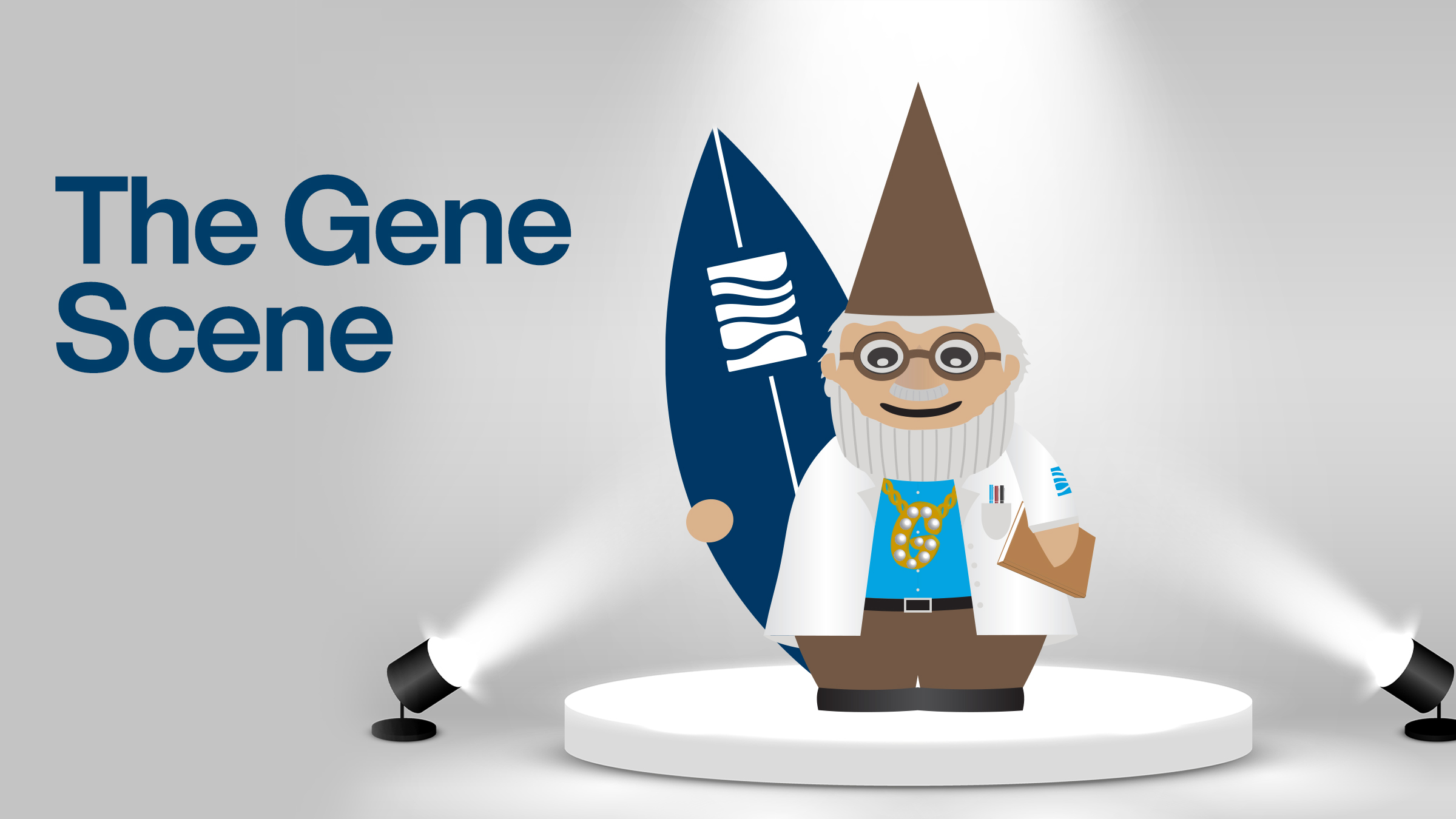 Welcome to the Gene Scene! Each week, we will explore a gene from the ACMG Secondary Findings list—genes identified by the American College of Medical Genetics and Genomics as having clear, actionable health implications. These genes are included because they’re linked to serious but preventable or manageable conditions when identified early. Here, we focus on the condition that led to the gene’s inclusion on the list, providing clear, relevant information that supports your clinic. To subscribe to the Gene Scene, contact your local GSL or send a request to info@ambrygen.com.
Welcome to the Gene Scene! Each week, we will explore a gene from the ACMG Secondary Findings list—genes identified by the American College of Medical Genetics and Genomics as having clear, actionable health implications. These genes are included because they’re linked to serious but preventable or manageable conditions when identified early. Here, we focus on the condition that led to the gene’s inclusion on the list, providing clear, relevant information that supports your clinic. To subscribe to the Gene Scene, contact your local GSL or send a request to info@ambrygen.com.
To access the Gene Scene archives, visit our blog.
Clinical Phenotype Summary:
The LDLR gene (NM_000527.4), which contains 18 coding exons and is located on chromosome 19p13.32, encodes the low-density lipoprotein receptor. Pathogenic variants in this gene are known to cause LDLR-related familial hypercholesterolemia (FH), which can be inherited in an autosomal dominant or autosomal recessive fashion. Loss of function has been reported as the mechanism of disease for LDLR-related FH.
Pathogenic LDLR variants are estimated to account for >50% of patients with FH.
FH is defined by the following:
• Extreme hypercholesterolemia—for heterozygous FH, this is defined as the following:
o In adults, untreated LDL-C levels >190 mg/dL (>4.9 mmol/L) or untreated total cholesterol levels >310 mg/dL (>8 mmol/L)
o In children and adolescents, untreated LDL-C levels >160 mg/dL (>4 mmol/L) or untreated total cholesterol levels >230 mg/dL (>6 mmol/L)
• Premature coronary heart, cerebral, or peripheral vascular disease
• Tendon xanthomas
• Corneal arcus
• Family history of high cholesterol, heart disease, and/or tendon xanthomas
Homozygous familial hypercholesterolemia has an earlier age of onset with a more severe presentation. This is defined as the following:
• Two pathogenic alleles (in the same or different FH genes)
• Untreated LDL-C levels >500 mg/dL (13 mmol/L) or treated LDL-C levels >300 mg/dL (>8 mmol/L)
• Cutaneous or tendon xanthoma prior to 10 years of age
• Both parents with elevated cholesterol consistent with FH
Treatment options for FH include cholesterol-lowering statins, ezetimibe, bile acid binding resins, and lipoprotein apheresis
Unique Considerations:
In addition to LDLR, several other genes can also cause FH. Homozygous FH can be caused by biallelic LDLR pathogenic variants, or less commonly through digenic inheritance with a different FH-associated gene.
Clinical Resources:
Understanding Your Positive Familial Hypercholesterolemia Genetic Test Result (one mutation)
Understanding Your Positive Familial Hypercholesterolemia Genetic Test Result (two mutations)
Ambry Knows Genes:
Peer-Reviewed Publications:
• The Clinical Genome Resource (ClinGen) Familial Hypercholesterolemia Variant Curation Expert Panel consensus guidelines for LDLR variant classification
Scientific Posters:
• RNA studies demonstrate that the LDLR c.2389+4A>G intronic variant causes familial hypercholesterolemia through an RNA splicing impact
Citations:
• Austin MA et al. Am J Epidemiol, 2004 Sep;160:407-20. PMID: 15321837
• Abifadel M et al. J Intern Med, 2023 Feb;293:144-165. PMID: 36196022
Ambry Genetics Gene-Disease Validity Scheme
Each week, we explore a gene from the ACMG Secondary Findings list—genes identified by the American College of Medical Genetics and Genomics as having clear, actionable health implications. These genes are included because they’re linked to serious but preventable or manageable conditions when identified early.
To learn more about the ACMG Secondary Findings list, click here.
To read all previous Gene Scene emails, click here.




